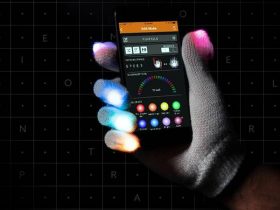Inventory management can be tricky for people who don’t know much about it and can also be potentially easy for people who know the tactics. For example, if you want to create a database inventory with scanners, then barcoding is the best way. But, only after considering the needs of your business should you populate it with business data. Otherwise, it can end up in the wrong hands.
Barcoding is a way to present some essential information. For example, you can allow your inventory scanners to scan the barcode on a product for accessing it. You only need to type the product number in the software, and you will get a barcode version of that product. Thus, storing the products in the inventory database and using inventory scanners to measure their authenticity becomes easier.
Types and standards of barcode scanning
The numeric barcode category is the most popular in industrial settings, warehousing, and airline scanning too. We can also scan the barcode in many retail items to identify the product number and the manufacturer’s name to check if it is authentic.
Alpha-numeric barcode is only used for shelf labelling purposes, mainly in grocery stores, so it is not common for all businesses. However, there is also a 2D barcode category, and it has become famous in recent years with the uprising of smartphones. The wireless inventory scanners are used to scan a product and to determine whether its information is found in the primary computer or not.
The PDF417 Codes, QR Codes, and Data Matrix Codes are some well-known forms of 2D barcodes, and all of these are used widely in several business settings. They can store ample data for a product and for the employees too. So, if the product requires maintenance, then the maintenance technician will need to access the barcode data through an inventory scanner, and only then can he opt to repair it.
How to set up Barcode Scanning in your Inventory Database?
Firstly, you need to define the product variants and their SKU numbers in the database to be put into different categories. The vendor details, product price, physical description, and the nominal amount you need to register the product in your inventory database will be some primary details required in this step.
Secondly, you need to select your inventory scanner or barcode inventory software system. FishBowl, Clear Spider, Square are some popular inventory scanners. You must like the scanner, which will meet your business needs.
Thirdly, you need to select a specific type of barcode such as numeric, alpha-numeric, or 2D. If your database inventory is smaller, you can opt for a numeric barcode, and if it is more extensive, you can choose a particular type of 2D barcode. After selection, you need to create the barcode for each product, which will happen automatically.
Fourthly, make sure to update your inventory database with the newly generated barcodes. You will have a streamlined inventory management system once you apply this step.
Finally, you need to print the barcodes and paste them on each of your products. For sticking the tag, make sure it does not fall under any circumstance because that will raise questions about its credibility.
The usefulness of Inventory Scanners
Inventory tracking, inventory optimization, and inventory stock auditing are some of the activities you can efficiently perform with inventory scanners. Since these scanners are wireless, so you can carry them anywhere you want, and they can prevent human errors big time. These scanners are also pretty efficient, so you will audit your stocks and update your supplies in no time with these.
Inventory scanners can help in preserving a lot of company resources. It does not drain out human effort, and some time-consuming activities are quickly done with its help. You can also opt for real-time updates on your inventory management software with these barcode scanners.
The images of these scanners are of high resolution, so the data it demonstrates about a product or an employee is relatively accurate. Suppose the encoded barcode in the inventory database does not match with the barcode image on a product. In that case, the item is undoubtedly replicated because these inventory scanners do not make the mistake of identifying a registered product.
Conclusion
We would like to inform you in the end that it surely takes some effort to set up a database for inventory with scanners but once you do that, the benefits are innumerable. Inventory management software can make this process even easier and that can save up a lot of your time. Both, the computer and the inventory scanner work in a single unit and that is why to transmit information from one to another, you must have a strong WiFi connection.
Author bio:

Peter Bell is a passionate blogger. He loves to share his thoughts, ideas and experiences with the world through blogging. Peter Bell is associated with worldhealthlife and exclusiverights.
















Leave a Reply